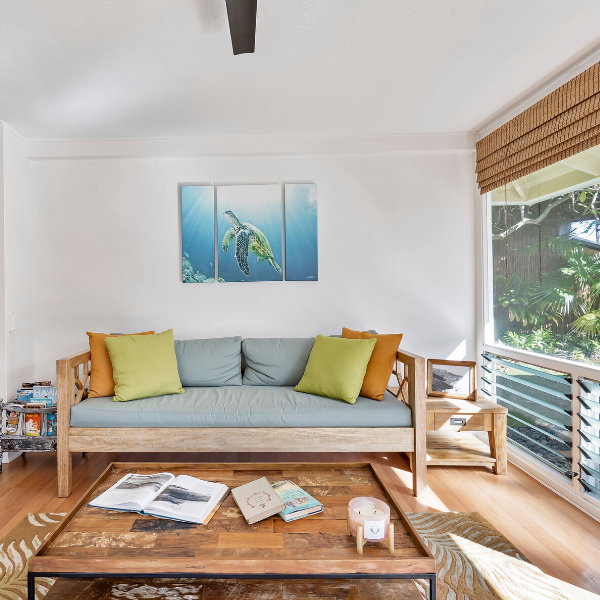As of 1 January 2017, the state government has released new legislation for smoke alarms. For those living in an existing home, you have a maximum of 10 years to get your Fire Prevention system up to the new standards. However, those looking to sell or lease out their properties, you will be required to adhere to the new legislation within a maximum of 5 years.
When you sleep, your sense of smell also sleeps. If a fire starts, toxic fumes can overcome you. Photoelectric smoke alarms see smoke and will alert you early, so you can escape.
With interconnected alarms, you will be alerted no matter where you are, or where the fire starts.
New legislation specifies the type, positioning, and interconnectedness of alarms, which are critical factors for an early warning and quick escape.
To give your family the best chance of surviving a house fire, QFES recommends updating your smoke alarms to match the new legislation as soon as you can. In the meantime, make sure all your alarms are working and properly maintained. A well-practised fire escape plan will also ensure a quick escape.
About Photoelectric Alarms
Photoelectric smoke alarms, also known as optical or photo-optical, detect visible particles of combustion.
They respond to a wide range of fires, but are particularly responsive to smouldering fires and the dense smoke given off by foam-filled furnishings or overheated PVC wiring.
Advantages
- Good for smouldering fire and dense smoke
- Not as prone to cooking nuisance alarms
- Contain no radioactive material
- Suitable for general use.
Your protection against fire increases with the quality and type of smoke alarm that is installed. Research indicates that photoelectric smoke alarms are generally more effective across a wider range of fires experienced in homes.
How do I keep my Smoke Alarm working?
A hardwired smoke alarm is connected to a home’s 240v mains power supply and has a battery back-up.
If cooking smoke sets off the alarm, do not disable it. Turn on the range fan, open a window or wave a towel near the alarm until the alarm stops beeping; or use the hush button (if fitted). Consider relocating the smoke alarm.
Once a month check by pressing the test button. If you cannot reach the button easily, use a broom handle.
Dust and debris can interfere with alarm functioning, so vacuum over and around your smoke alarm regularly.
Replace the backup battery on 240v alarms:
- rechargeable batteries – refer to manufacturer instructions
- non-rechargeable – replace annually.
Most alarms emit a short ‘BEEP’ sound when the batteries are low. This is your reminder to replace the battery.
Smoke alarms must never be painted.
When do I replace my Smoke Alarms?
All types of smoke alarms have a limited life-span (10 years under normal conditions of use). They should be replaced prior to the expiry date on the manufacturer’s warranty.
For smoke alarms with 10-year batteries that are non-removable, the entire smoke alarm must be replaced after 10 years.
All smoke alarms should be date stamped at the time it was manufactured – usually on the back.
Small numbers of smoke alarms can be safely disposed of in household rubbish. Contact your local council for more information.
Specialty alarms are also available, including:
- alarms for deaf and hearing-impaired people; or
- alarms with emergency lights, heat sensors.
Locations for installing Smoke Alarms
Where practicable smoke alarms must be placed on the ceiling. Smoke alarms must not be placed:
- within 300mm of a corner of a ceiling and a wall;
- within 300mm of a light fitting;
- within 400mm of an air-conditioning vent;
- within 400mm of the blades of a ceiling fan.
There are special requirements for stairways, sloping ceilings, and ceilings with exposed beams. Specific requirements will be explained in the Building Fire Safety Regulation 2008.

Existing Homes
From 1 January 2017
When replacing smoke alarms, they must be of a photoelectric type which complies with Australian Standard (AS) 3786-2014.
Replacing smoke alarms
Existing smoke alarms manufactured more than ten years ago must be replaced. (Note: Smoke alarms should have the date of manufacture stamped on them.)
Smoke alarms that do not operate when tested must be replaced immediately.
Existing hardwired smoke alarms that need replacement must be replaced with a hardwired smoke alarm.
From 1 January 2027
Smoke alarms in all dwellings must:
- be photoelectric (AS 3786-2014); and
- not also contain an ionisation sensor; and
- be less than 10 years old; and
- operate when tested; and
- be interconnected with every other smoke alarm in the dwelling so all activate together.
Smoke alarms must be installed on each storey:
- in each bedroom; and
- in hallways which connect bedrooms and the rest of the dwelling; or
- if there is no hallway, between the bedrooms and other parts of the storey; and
- if there are no bedrooms on a storey at least one smoke alarm must be installed in the most likely path of travel to exit the dwelling.
Smoke alarms must be either hardwired or powered by a nonremovable 10-year battery.
Leased or Sold Homes
From 1 January 2017
Same requirements as for existing dwellings PLUS
Existing landlord’s and tenant’s obligations regarding the installation and testing of smoke alarms continue.
Property sellers must continue to lodge a Form 24 with the Queensland Land Registry Office stating the requirements of the smoke alarm legislation have been met.
From 1 January 2027
Smoke alarms in all dwellings must:
- be photoelectric (AS 3786-2014); and
- not also contain an ionisation sensor; and
- be less than 10 years old; and
- operate when tested; and
- be interconnected with every other smoke alarm in the dwelling so all activate together.
Smoke alarms must be installed on each storey:
- in each bedroom; and
- in hallways which connect bedrooms and the rest of the dwelling; or
- if there is no hallway, between the bedrooms and other parts of the storey; and
- if there are no bedrooms on a storey at least one smoke alarm must be installed in the most likely path of travel to exit the dwelling.
Smoke alarms must be either hardwired or powered by a nonremovable 10-year battery.
New Homes or Renovations
From 1 January 2017
The development approval process for new dwellings and substantial renovations (over 50% home renovated) will ensure that building approvals received on or after this date will bring dwellings into compliance with the new laws.
Smoke alarms in all dwellings must:
- be photoelectric (AS 3786-2014); and
- not also contain an ionisation sensor; and
- be less than 10 years old; and
- operate when tested; and
- be interconnected with every other smoke alarm in the dwelling so all activate together.
Smoke alarms must be installed on each storey:
- in each bedroom; and
- in hallways which connect bedrooms and the rest of the dwelling; or
- if there is no hallway, between the bedrooms and other parts of the storey; and
- if there are no bedrooms on a storey at least one smoke alarm must be installed in the most likely path of travel to exit the dwelling.
Search this blog
About Sage Energy

Sage Energy are electrical and air conditioning specialists servicing the Brisbane, Sunshine Coast, Ipswich and Gold Coast region. With experience working across the commercial, industrial and residential industries, Sage Energy is your one-stop-shop when it comes to all electrical and air conditioning projects.
Request a Call Back
Please complete the form
Enjoyed this post?
Share it

